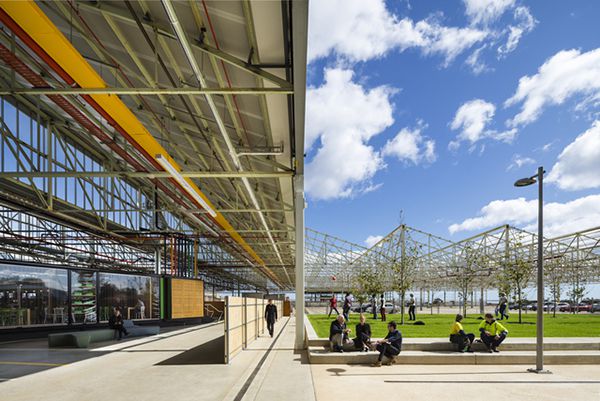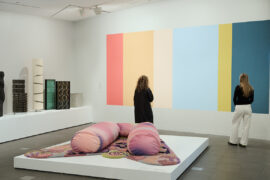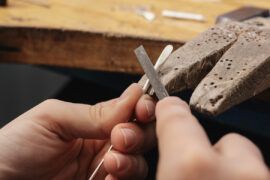Which Australian city boasts the world’s best adaptive reuse project?

June 1st, 2016
An Adelaide ‘clean-tech hub’ that combines industry, universities, TAFE and SMEs is being is hailed as a world-class exemplar of adaptive reuse.
When Mitsubishi stopped making cars in Australia in 2008, with the loss of 1000 jobs, the South Australian government unveiled plans to build a ‘clean tech hub’ in place of the manufacturing plant. Having acquired the 61-hectare site at Tonsley, south of Adelaide, Renewal SA planned to demolish the factory buildings and remove all traces of the failed industry, in effect to wipe the slate clean before starting again from scratch. However, architects Woods Bagot proposed an innovative masterplan that convinced their client to retain a significant portion of the site’s industrial fabric. An 8-hectare steel-framed shed was stripped back to its elegant skeleton, which now forms the basis of a bold new mixed-use precinct.
In collaboration with Tridente Architects, Woods Bagot developed a series of Pods to attract new businesses – small, medium and large – to take up residence under the giant factory roof. Now, the Motor Assembly Building, or MAB as it’s known, sits at the heart of an energetic high-tech industrial park, and attracts people from across the city and the surrounding neighbourhood to study, work, eat and drink, play sport, and socialise. The project has become a symbol of South Australia’s commitment to the new ‘knowledge economy’, and it collected a global award for adaptive reuse in early 2016, beating 60 entries from around the world to take out the top prize.
Words by Rachel Bernstone.
Photography Sam Noonan.
Read the full story in Indesign Issue #65, on sale tomorrow, Thursday 2 June. Subscribe here.
INDESIGN is on instagram
Follow @indesignlive
A searchable and comprehensive guide for specifying leading products and their suppliers
Keep up to date with the latest and greatest from our industry BFF's!

For Aidan Mawhinney, the secret ingredient to Living Edge’s success “comes down to people, product and place.” As the brand celebrates a significant 25-year milestone, it’s that commitment to authentic, sustainable design – and the people behind it all – that continues to anchor its legacy.

London-based design duo Raw Edges have joined forces with Established & Sons and Tongue & Groove to introduce Wall to Wall – a hand-stained, “living collection” that transforms parquet flooring into a canvas of colour, pattern, and possibility.

Abbotsford Convent has appointed Kennedy Nolan to guide the next stage of development at the heritage-listed Melbourne precinct, continuing its evolution as a cultural and community landmark.

At the NGV’s Making Good: Redesigning the Everyday, design becomes a force for repair. From algae-based vinyl to mycelium earplugs, the exhibition proves that rethinking the ordinary can reshape our collective future.
The internet never sleeps! Here's the stuff you might have missed

Having recently attended the Symposium as the Murcutt Pin-holder, Sydney-based architect Jamileh Jahangiri reflects on the importance of the gathering.

Bean Buro’s Singapore office for Anglo-Eastern is a poetic continuation of their Hong Kong headquarters — a workplace that balances identity and calm.